Media | Articles
Your handy 1955–65 Alfa Romeo Giulietta Spider buyer’s guide
You probably remember the first time you saw an Alfa Romeo Giulietta Spider. Though Alfa Romeo only made about 14,300 examples of this quintessentially Italian sports roadster, they seem to be everywhere—on the screen, if not the streets. Edward Fox’s titular character in 1973’s Day of the Jackal drove one, but the Internet Movie Car Database lists some 235 examples of a Giulietta Spider cast at the heart of the action.
In a way, Alfa followed an American recipe with the Giulietta. The droptop was just one of a range of body styles built around a single platform, similar to the way that Ford offered the Falcon in a wide variety of configurations—from coupe to convertible to station wagon. At a European Alfa Romeo retailer, a Giulietta buyer had their choice between saloon, 2+2 coupe, Spider, Sprint, Sprint Speciale, and—if they were one of the 91 people who ordered one from Carrozzeria Colli—estate.
Bertone and Pinin Farina were both in the running for the contract to develop the cars, and each provided a number of prototypes. Max Hoffman favored the Pinin Farina, which would eventually be on display at the 1955 Paris Motor Show, but Alfa’s New York importer actually purchased the Bertone prototype for himself. The Pinin Farina–designed car was much more formal, with lines hewing closer to those of the sedans and coupes. It would be Pinin Farina’s first contribution to the successful Giulietta lineup.
The Giulietta Spider’s roots run deep in America. The Giulietta Berlina and the Bertone-penned Sprint arrived first in 1954 and sold sensationally well in Europe. But European sedans weren’t a hot seller in the United States and wouldn’t be until the late 1970s. In one well-worn story, New York-based European and British car importer Max Hoffman was in Milan to purchase a number of Bertone-constructed Alfa Romeo Giulietta Sprint convertibles when he told Alfa Romeo executives that he’d place an immediate order for 600 Giulietta, along the option for another 2000 cars, with the stipulation that Alfa Romeo had to offer a two-seat roadster.
1956–58
Production commenced for the 1956 model year in the United States. These early cars were built on the short-wheelbase Tipo 750 chassis. Like the rest of the Giulietta line, the Spider featured unibody construction, providing a stiff, solid platform for handling performance. For a car that would prove to be the essential Italian sports car, the Giulietta Spider is remarkably conservative. It’s not that far away from the Lancia B24 Aurelia Spider that Pinin Farina developed in 1954.
Marketplace
Buy and sell classics with confidence
Under the hood was the magic 1.3-liter inline four-cylinder with dual overhead cams spun by a double-row chain, an engine that would set the course for Alfa Romeo until the early 1990s. All Giulietta Spiders—Veloce models notwithstanding—featured a single Solex carburetor and 79 hp. The sole gearbox was a four-speed manual, with a two-piece driveshaft.
Up front, the Giulietta Spider featured double-wishbone independent suspension with variable-rate coil springs and tube shocks. At the rear, the Spider used a solid axle, mounted with an upper triangular thrust rod and lower radius rods, variable-rate coil springs, and tube shocks. The hydraulic brakes were “the result of long experience in motor races,” per the brochure, with drums all the way around and herringbone cooling fins on the front. Alfa literature noted that the brakes “give to the Giulietta spider a safety and a prompt reaction, such as to represent one of the main features of the car.”
Inside, the Giulietta Spider was beautifully styled, with leather upholstery and wool carpets. The doors featured upholstered door panels, chrome door pulls, door handles, and window cranks. Much was made of the roll-up windows in the brochure, which promised a tight seal with the windshield frame to protect customers from the elements. The dash was delightfully simple, with a thin pad on top; switches for headlamp signaling, choke, throttle and fan; a radio blanking plate with a Pinin Farina emblem; and a mirror mounted to the dash top.

Three large-faced round Veglia gauges provided the instrumentation. Front and center was a tachometer, with a small oil pressure gauge underneath. On the right, the speedometer, odometer, and trip meter shared space with two warning lights. The left gauge included oil temp, water temp, and fuel gauges along with a warning light for fuel level, the turn signals, and the headlamps.
In the sun, it’s all open-top motoring, but in the cooler, wetter weather, the folding soft top pivoted into place and snapped tight with two levers. The brochure also showed a removable hardtop, but these appear to be exceedingly rare. Through 1958, the Giulietta Spider essentially remained unchanged.
It’s always a challenge to separate calendar year from model year production. In the case of the Giulietta, we have one source—Luigi Fusi, the curator of the Alfa Romeo Registry. His book notes that Giulietta Spider production topped out at 1 car for 1955, and 21 for the 1956 model year. In 1957, Alfa Romeo produced 2192 Giulietta Spiders. For 1958, it produced 2446.
1959–65
The 1959 calendar year is pivotal for understanding the Giulietta Spider. The biggest change was the shift from the Tipo 750 chassis to the Tipo 101. Cars produced in the 1959 calendar year with serial numbers between 1495.05620 and 1495.07213 are all short-wheelbase Tipo 750 cars, the same chassis style produced between 1956 and 1958.
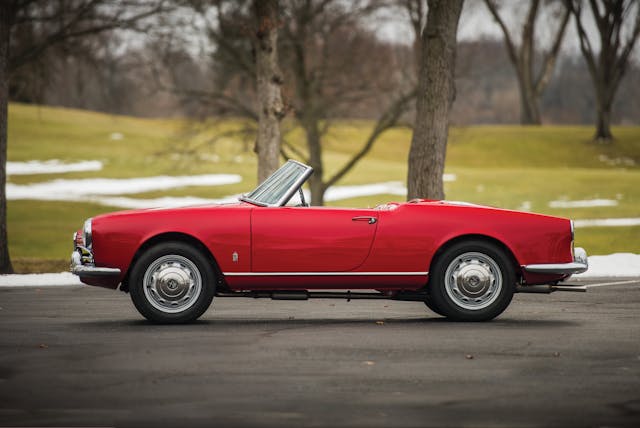
Cars with serial numbers between 1495.08001 and 1495.08537 ride on the updated Tipo 101 chassis. The new car debuted at the Frankfurt Motor Show in 1959. Trying to identify the differences? Good luck. Exterior photos of early cars from 1957 and late cars from 1959 look absolutely identical. 750-Series examples have an open glovebox, while the 101-Series cars cover the same compartment with a lid. The wheelbase stretched from 86.6 to 88.6 inches, and the doors on the later cars were reshaped on the trailing edge to provide about two inches more opening room.
Engines also changed slightly between the 750- and the 101-Series. Serial numbers tell you what you’re looking at, but the big tipoff between a 750 and a 101 engine is the location of the fuel pump. The 750-Series fuel pump was located on the engine block. The 101-Series cars had a boss cast on the timing cover to which the fuel pump mounted. Naturally, this arrangement isn’t set in stone. Some of the interim cars had the 750-Series fuel pump mounting locations. The gearbox was also redesigned for the 101-Series cars.
The other big news for 1959 was the introduction of the Giulietta Spider Veloce. All Veloces featured dual Weber carburetors, hotter cams, a cold-air intake, and higher-compression pistons. Alfa’s engineers dialed the horsepower up to 91, while output for the “normale”—the unofficial name for non-Veloce Spiders—remained at 79. From 1960 to 1962, nothing much changed for the Alfa Romeo Giulietta Spider and Veloce.
In 1959, Alfa Romeo built 1593 750-Series Giulietta Spiders before transitioning to the 101-Series. According to the numbers in Luigi Fusi’s book, this appears to be a short period during which you can identify Veloces by serial number. Alfa Romeo built 536 “normale,” or single Solex–equipped Spiders, and an additional 111 Spider Veloces, which had consecutive numbers.
For 1960, chassis numbers get confusing. Early cars still retained the “1495” prefix on the serial number. Of those cars, Alfa Romeo had its best showing yet, with 3362 units produced. Later cars feature a chassis number with the “101.20” prefix, which makes much more sense. Of those, Alfa Romeo built an additional 1732.
In 1961 Alfa Romeo built 3169 Spiders and Spider Veloces, combined. In the following year, it produced 1182 Giulietta Spiders and Spider Veloces all told. But things got weird in 1962.
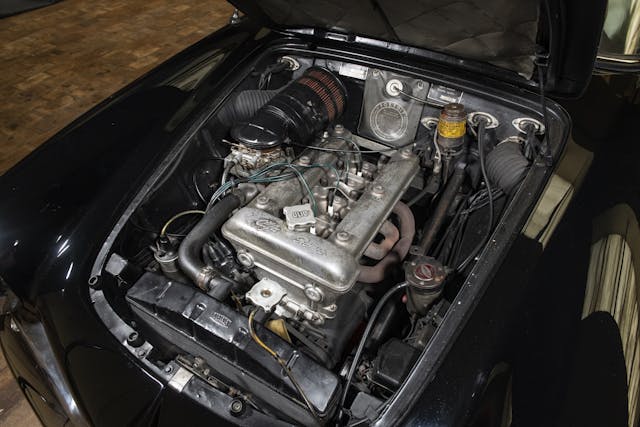
That year, Alfa Romeo introduced a new 1600-cc engine. In the meantime, the all-new Alfa Romeo Giulia Berlina and coupe appeared. However, there wouldn’t be an all-new Giulia Spider—only the Giulietta with a brand-new name and a 1600-cc engine. For all intents and purposes, it’s exactly the same car as the one built in early 1962 under the old name. You can identify these cars by their “101.23” chassis numbers. Late in 1962, Alfa Romeo built an additional 3293 units of the 101.23 Giulia Spider.
In 1963, the name changed slightly again to “Giulia 1600 Spider,” and the numbers in Luigi Fusi’s book include both left-hand-drive (designated 101.23) and right-hand-drive (guida a destra, or simply g.d.) cars (101.19). Alfa Romeo built 1095 101.23 left-hand-drive Giulia 1600 Spiders. Unfortunately, there appears to be a typographical error in Fusi’s accounting, with one digit apparently dropped from the last serial number in the left-hand drive column, so there’s no reliable tally of left-hand-drive cars built that year.
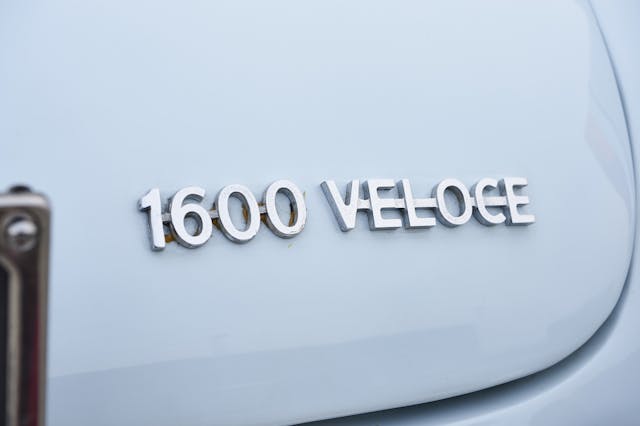
In 1964, there are three distinct numbers once again for Giulia 1600 Spider production: “normale” cars with left-hand drive, their right-hand drive counterparts, and Spider Veloces. That year, Alfa produced 1877 “normale” 1600 Spiders in left-hand-drive, 1 in right-hand-drive (now under the same 101.23 chassis number as the right-hand-drive model), and 289 1600 Spider Veloces, with 101.18 chassis numbers.
For the final year of production in 1965, just 286 “normale” Giulia 1600 Spiders were produced, all of which appear to be left-hand-drive, along with 800 Spider Veloces.
Before you buy

In any 1950s and 1960s Italian car with monocoque construction, rust is a fact of life and your mortal enemy. At this point, 55 years after the last one rolled out of the shop, there’s probably no such thing as a “rust free” 750/101 Spider. They either are rusty, or they’ve been rusty and someone’s repaired them. The quality of that repair is the difference between a car that’s worth the money and one that’s best left alone.
If you’ve read this far, you probably know where to look: Floor pans, trunk floors, fender bottoms, those insidious rocker panels and their jack points, the battery trays, and front valences. There are good-quality replacement parts available, specifically from Wolf Steel Restorations, which produces floors, rockers, entire fenders, fender patch panels, noses, and battery trays, among other components.
Inside, these cars are pretty solid. They were fitted with good quality materials and components, so it’s entirely possible that you’ll find a car with a more-or-less original interior. Seat upholstery, carpet, door handles, instrument bezels, and even ashtrays are available at Classic Alfa. Shops like Palo Alto Speedometer can also restore the Veglia gauges.
Engines are straightforward and robust, in either 1300 or 1600 form. One thing to note is that cars around the 1959 time frame can be parts-bin affairs, especially in the engine compartment. Parts for the 101-Series engines are readily available and relatively inexpensive. Parts for the early 750-Series can be far more costly to replace.
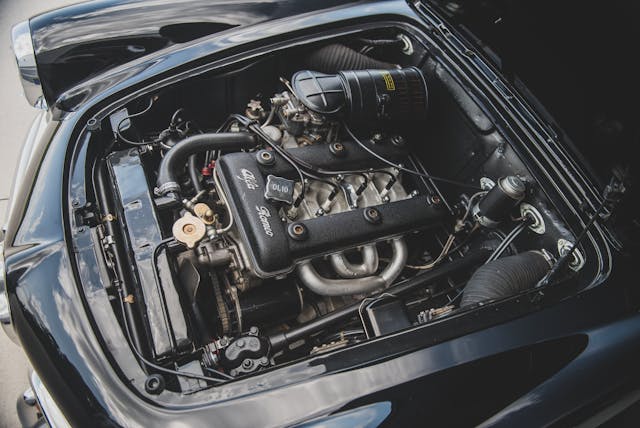
The transmissions have weak second-gear synchros as a rule, forcing the driver to count one Mississippi, two Mississippi between gearshifts. There are modern synchro upgrades, and a transmission rebuild shouldn’t be much more expensive than it would be for a vintage Volkswagen. Many of these cars have had five-speed gearbox swaps. It’s not the end of the world, unless you’re really concerned about originality.
The suspension and brakes are about as simple as you’ll ever find. Buy decent tires, get a good alignment, and make sure nothing’s out of spec, and this car will offer everything you’d ever want out of a sports car. The brakes are four-wheel finned aluminum drums and do a great job of hauling the car to a stop.
Electrical issues? Sure, if the wiring is 55 to 65 years old. Lionel Velez at Auto Italia Sportiva offers new harnesses and fuse blocks and comes highly recommended.
Valuation

Our Valuation team at Hagerty notes that Giulietta Spiders, especially #1 (Concours) and #2 (Excellent) condition cars, have increased consistently in value since 2010. These days, a museum-quality #1 Giulietta/Giulia Spider, regardless of year, tops out at $110,000. A Veloce will add $40,000 to $50,000 to that figure, but please check here for the latest values.
The good news is that plenty of cars in the $50,000 to $60,000 range hover in the “driver” class. In June of 2021, Bring a Trailer sold a very nicely restored 1956 “normale” for $66,000. The same month saw a clean-looking 1958 with a fairly crusty underside—along with a spare, rebuilt Veloce engine—go for $55,000.
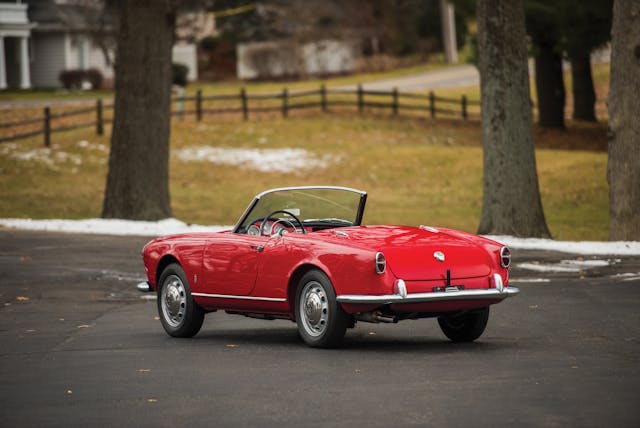
Over the last five years, Hagerty has quoted 32 percent fewer Giuliettas across all body styles. Quoted values, however, rose by about 7 percent. Boomers represent the lion’s share of those seeking quotes for these cars at 60 percent. For context, this demographic comprises 37 percent of the overall market. Gen Xers lag a bit behind but still account for a full quarter of Giulietta quotes. Pre-boomers, millennials, and Gen Z appear the least fascinated with these cars, together making up the remaining 13 percent of quotes.
No matter what you call it, the Alfa Romeo Giulietta/Giulia 750/101 Spider and/or Spider Veloce is a well-established member of the collector market. These cars are widely recognized as representative of their era, and even as the boomers who own most of them begin to release the cars back into the market, this model is likely to fare well.







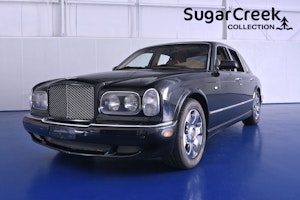

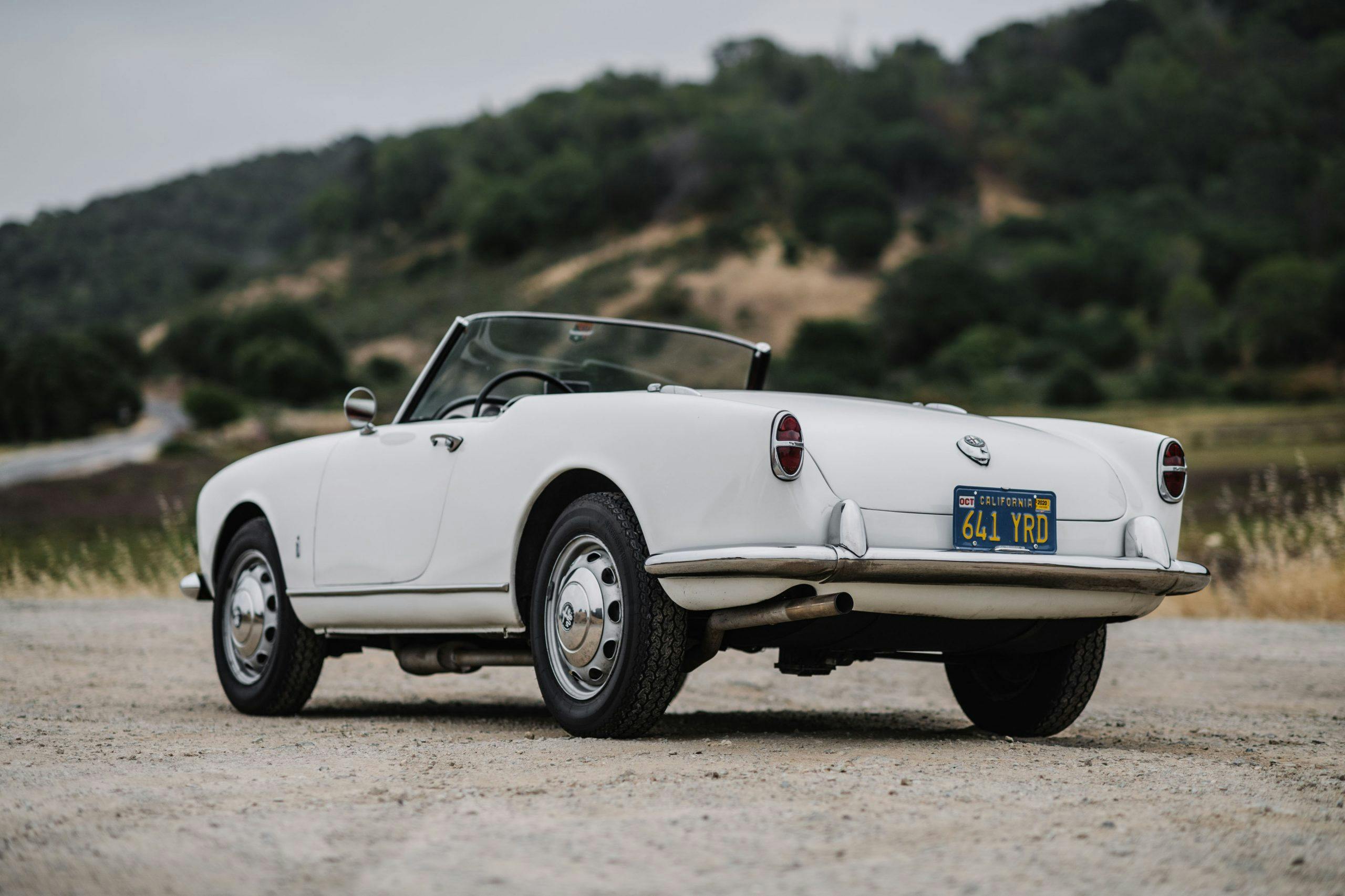
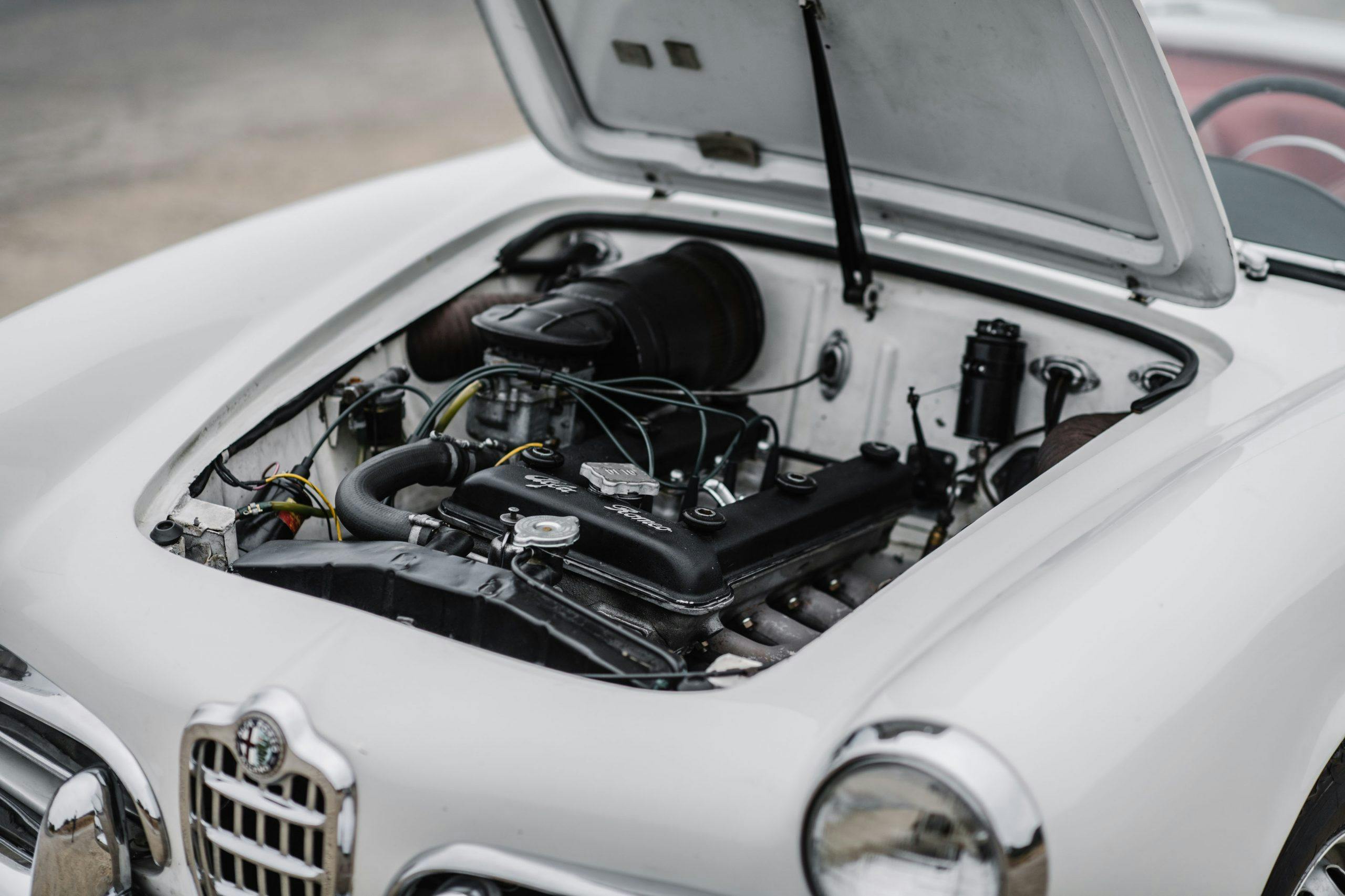

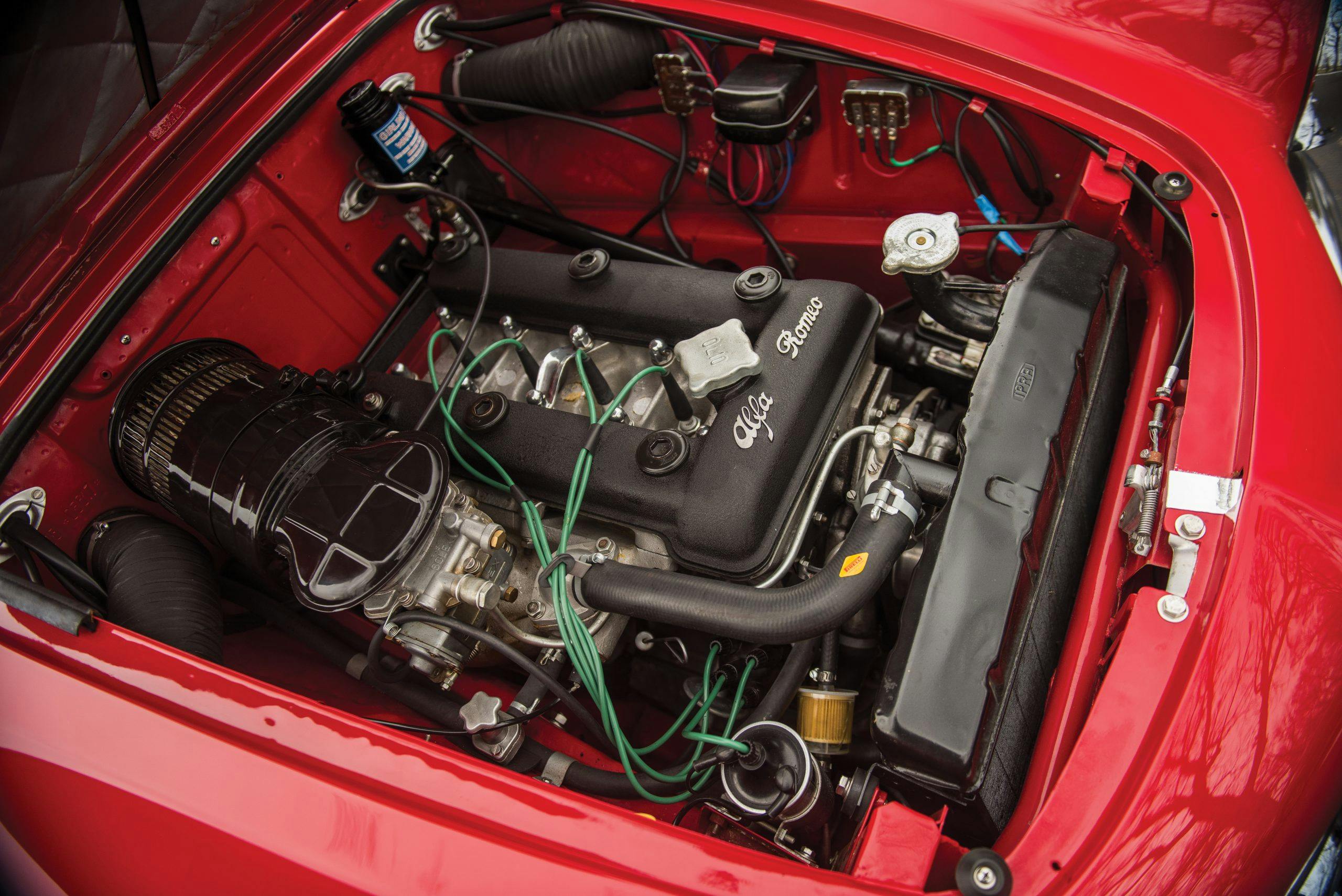
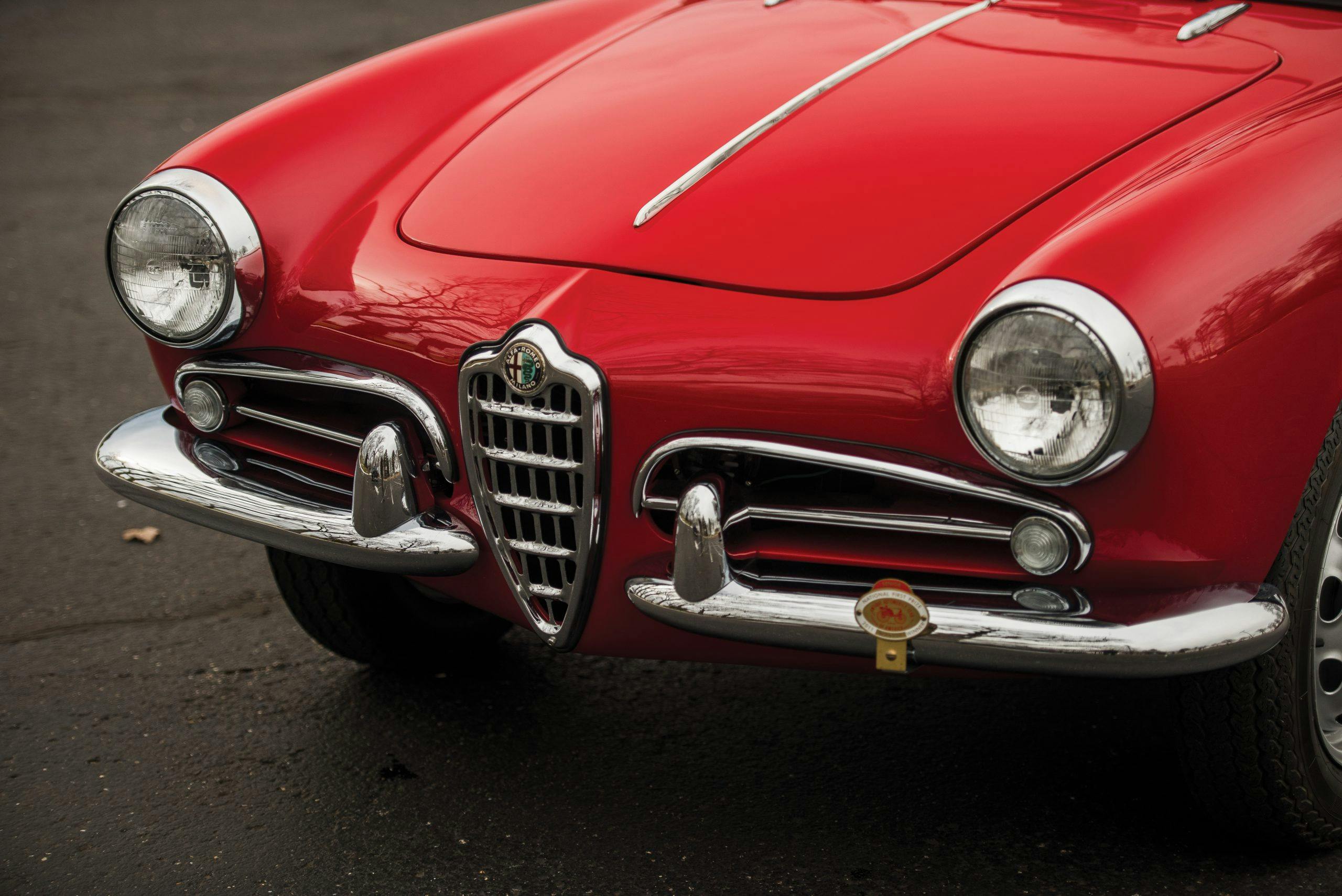
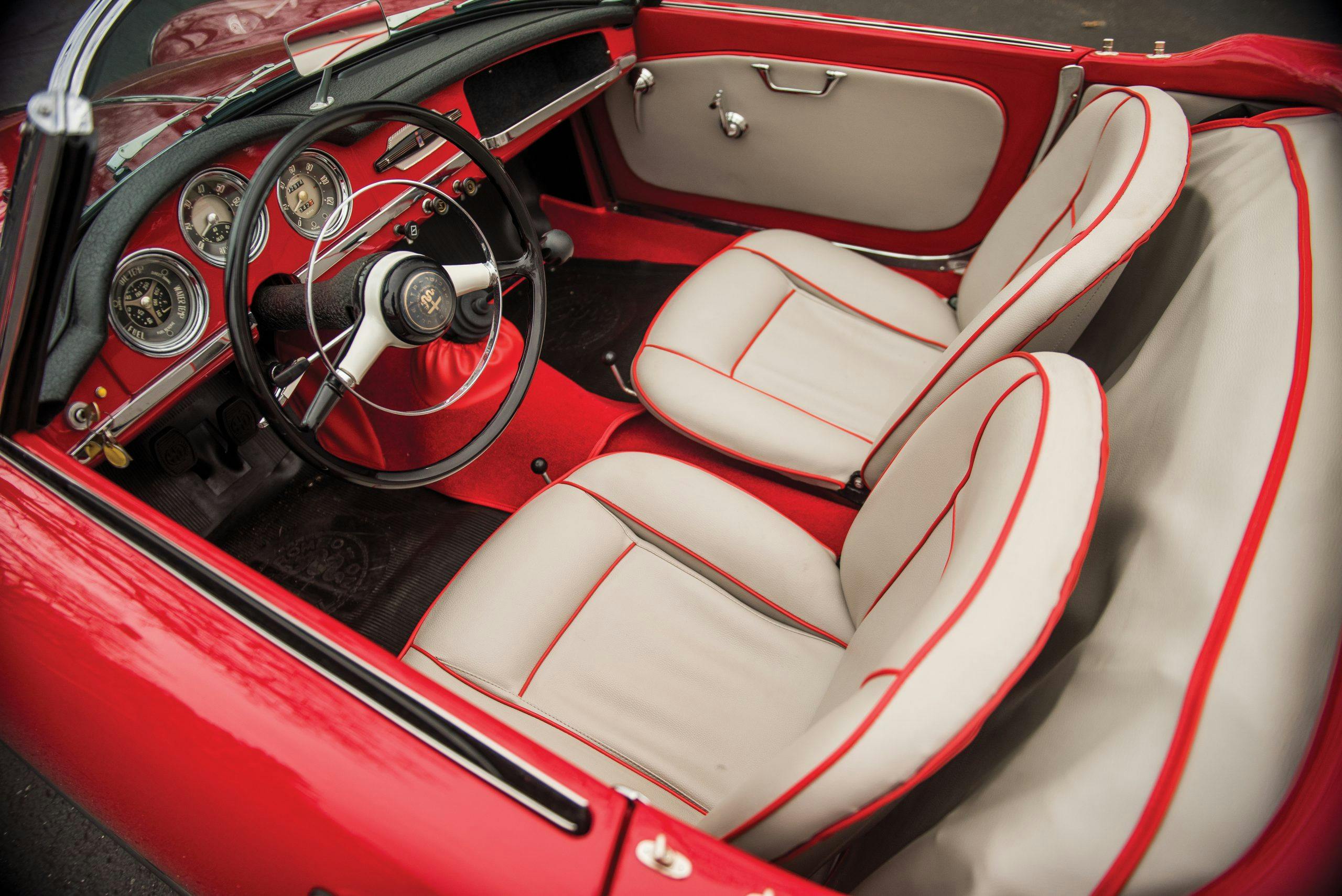
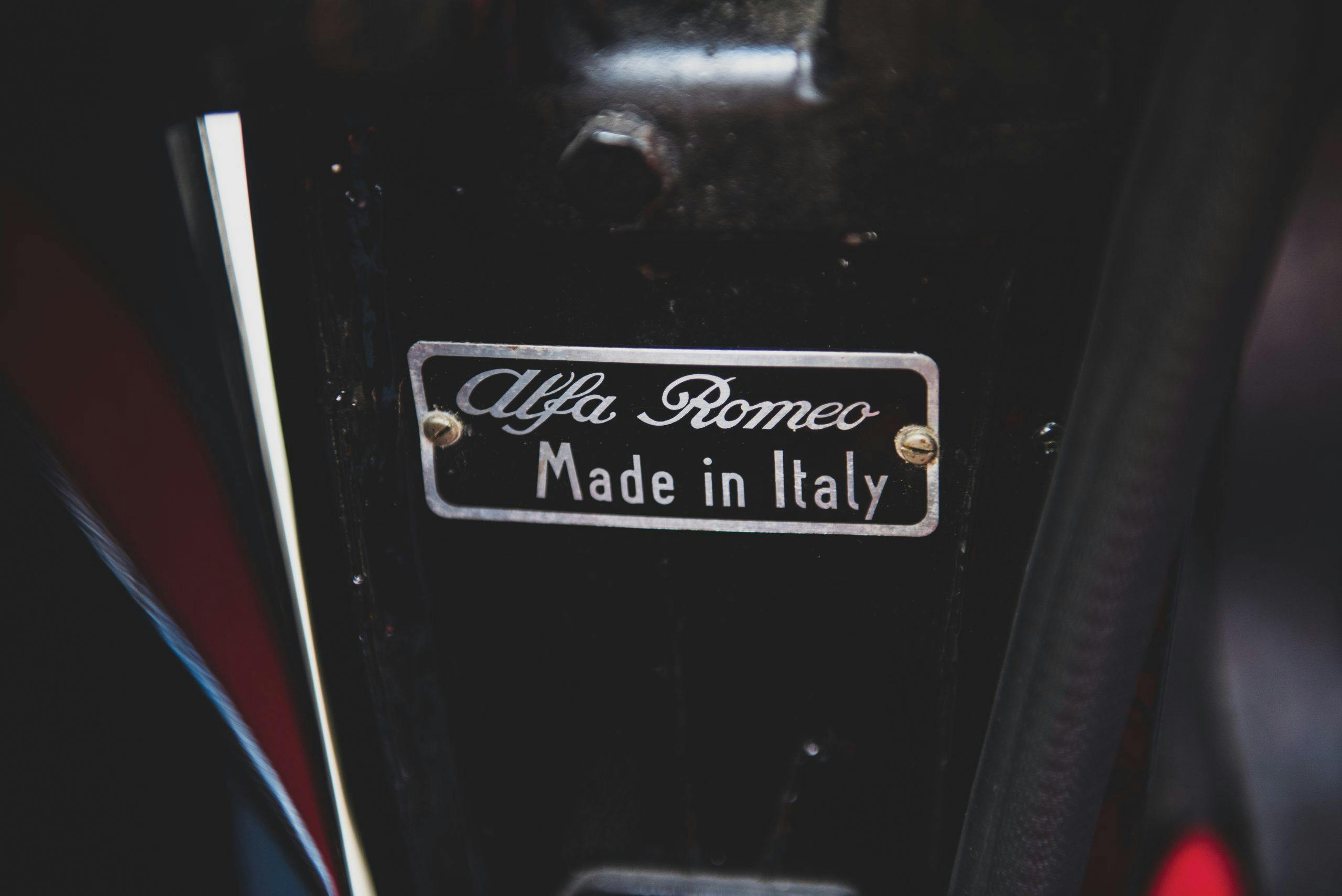
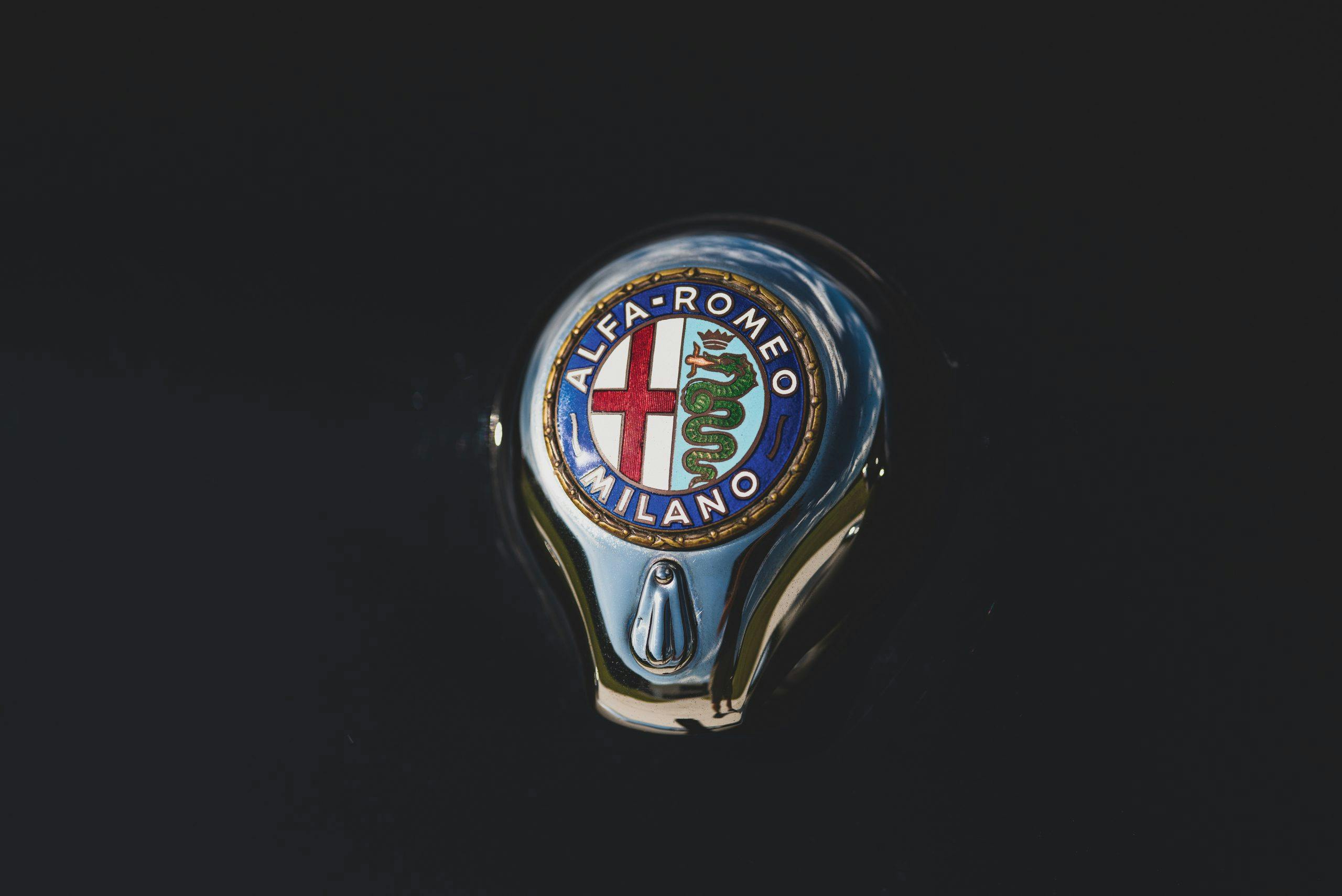
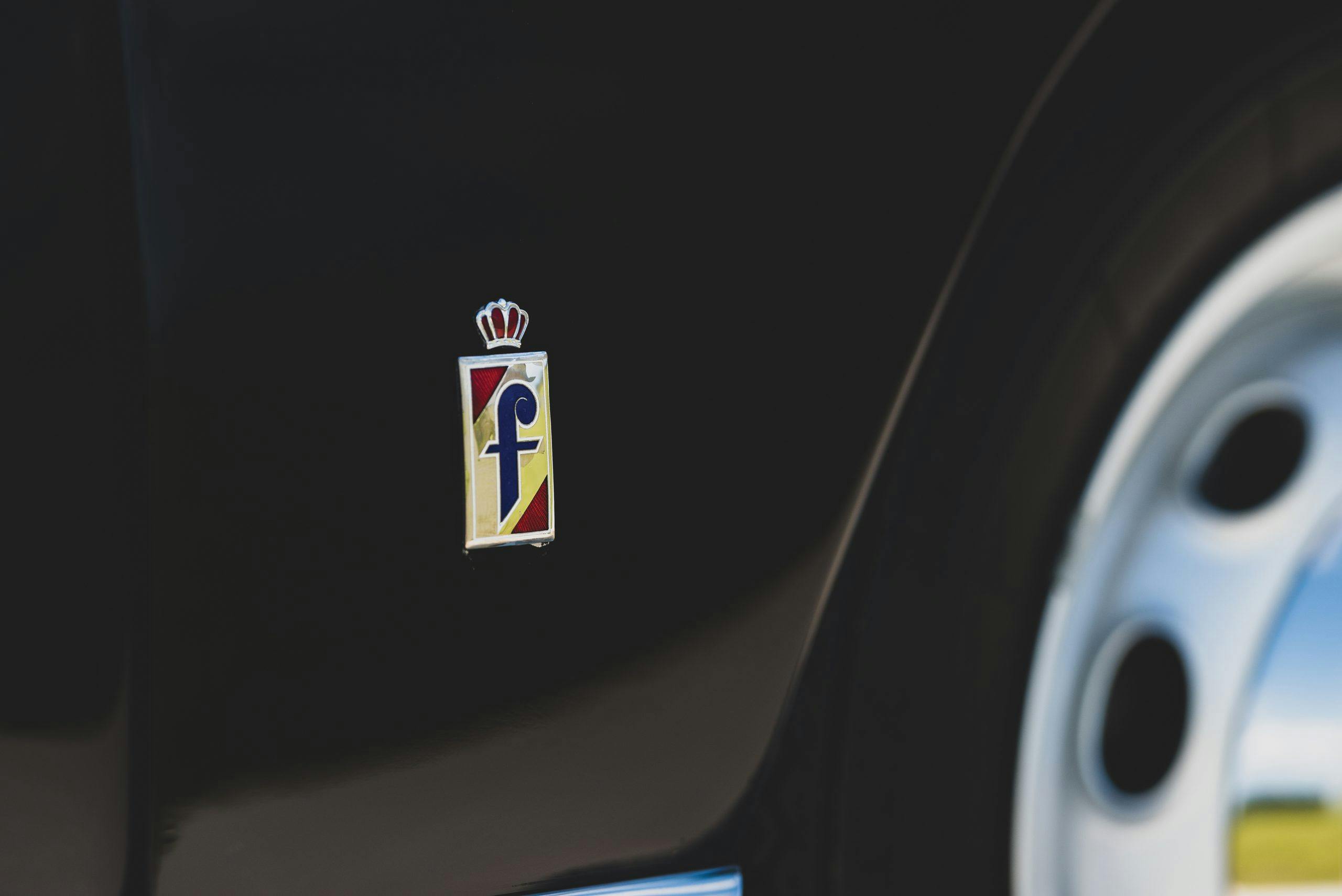




















The 1965 models had 5-speed manual transmission
Oh, thank you for a great review of the Alfa Romeo Giulietta Spyder. I purchased a very used 1957 model in 1965 for (if memory serves me) $400. It was painted in British racing green and sounded great. I took the car home , washed it, checked the fluids and took my wife out for a test ride. I was a foolish young man at the time and the car lasted but one day before the clutch failed! Having a limited budget I couldn’t buy a new clutch (about $100 back then) so it sat in my garage for a year until I could afford one. I sold the car a week later after repairing it. *sigh*. I’ve followed Alfa Romeo in racing most of my life and now with Fernando Alonso driving for Alfa in Formula One, the memory of mine continues on.